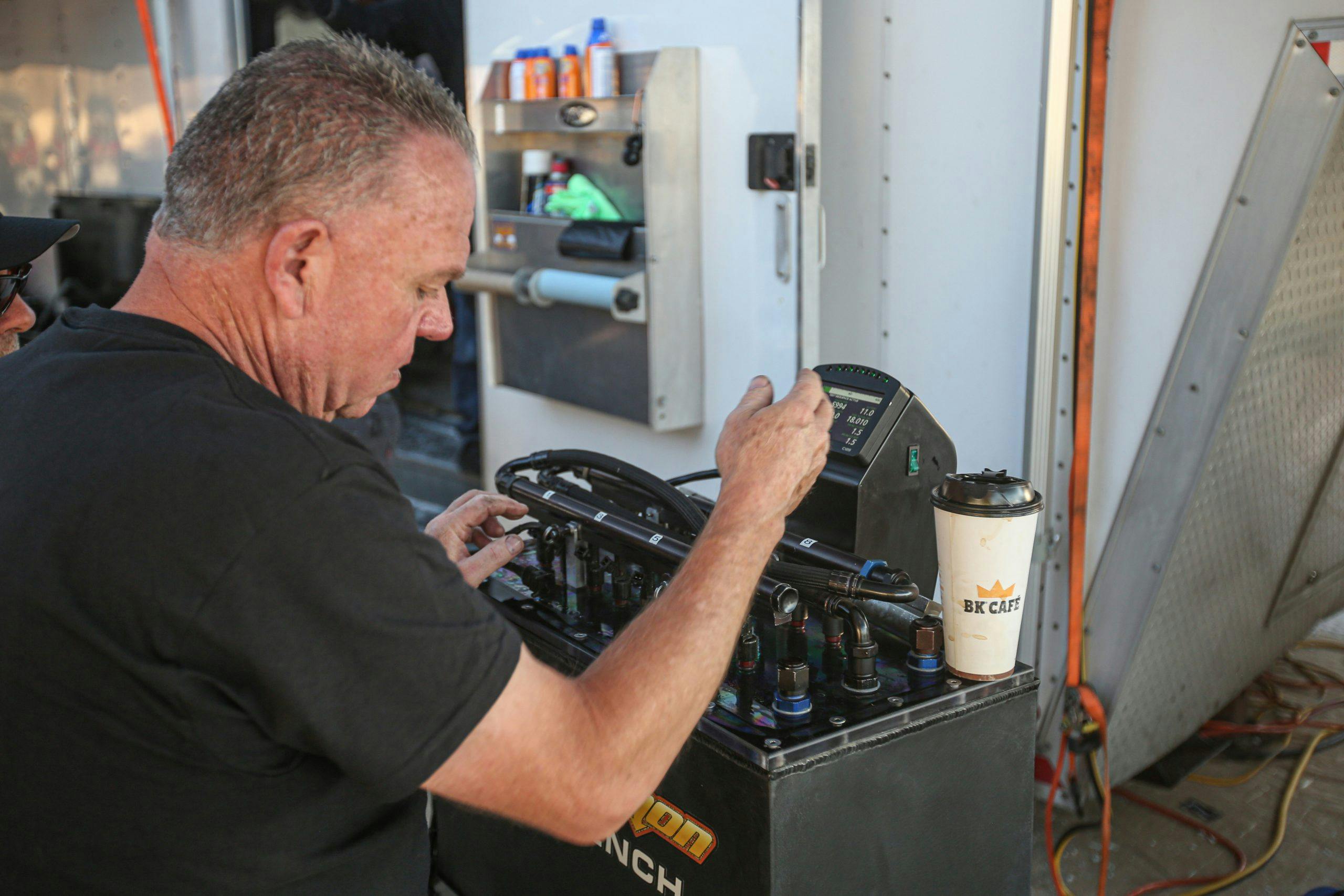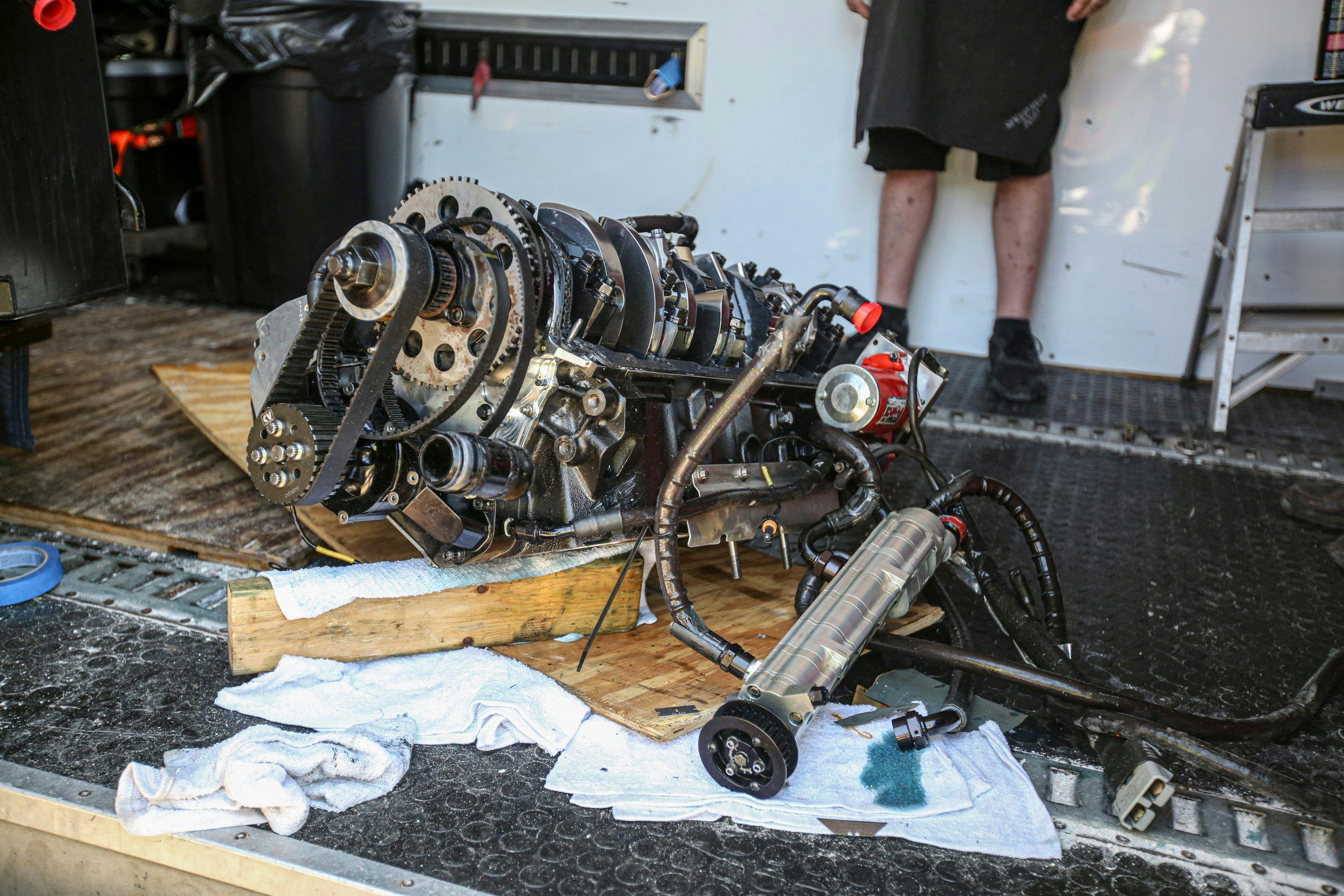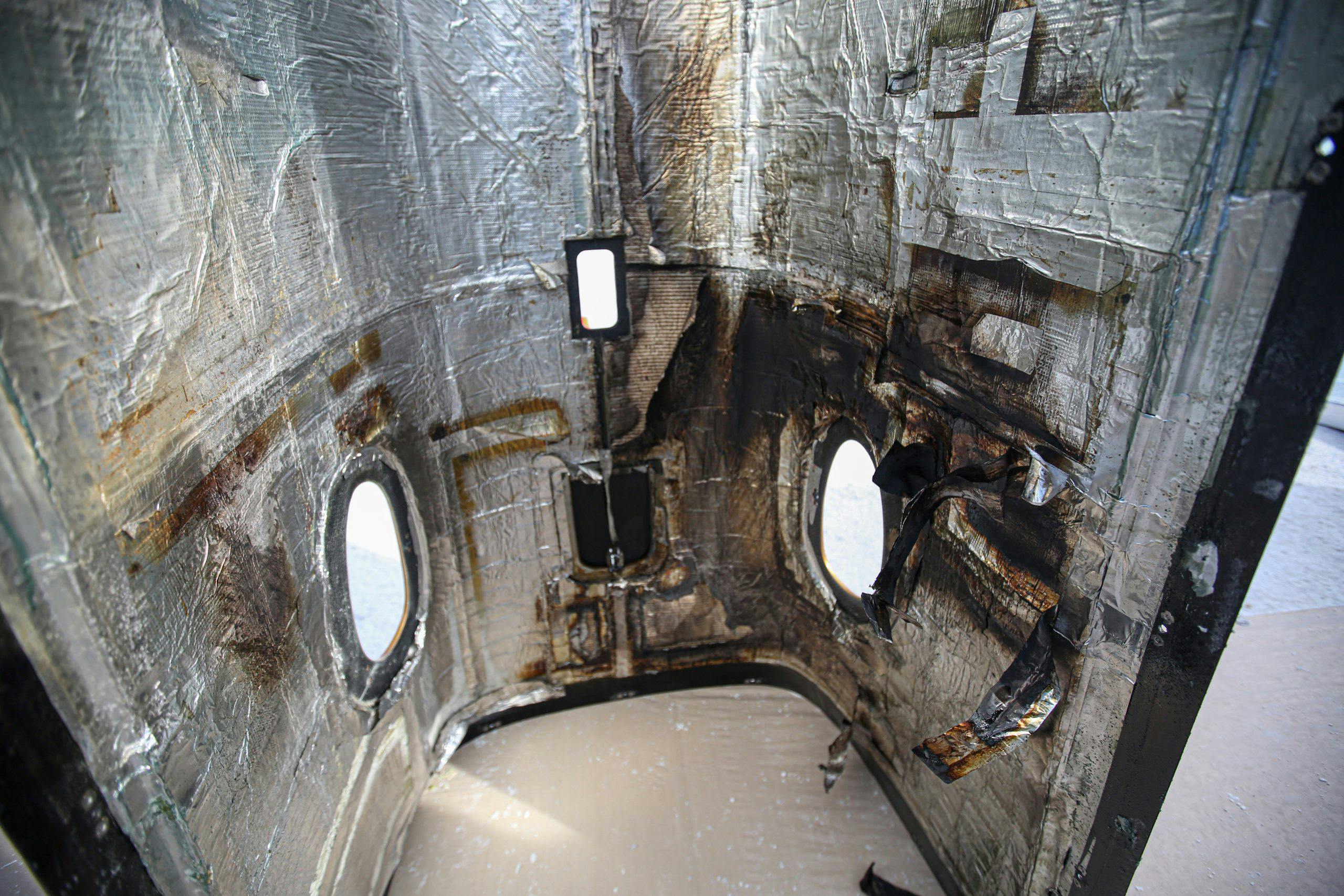Media | Articles
The Speed Demon streamliner becomes world’s fastest piston-powered car
Just like it does every Speed Week, the Speed Demon team came to the salt in 2020 with a proverbial quiver full of engines and its collective mind filled with lofty goals. The perennial 400-mph team aimed to set the AA Blown Fuel Streamliner record with its newest engine, a big-block Chevy that debuted in 2019. However, that wasn’t the only record the team was targeting, because the 3000-hp engine built by the legendary Kenny Duttweiler had plenty of backup.
A 443-cubic-inch LS-based V-8, also built by Duttweiler, was ready to take on the A/BFS record. Tagging along were two more small-block Chevy V-8s, the proven C-class engine that has been an absolute workhorse for the team, and the high-revving E-class engine. The smallest V-8, at just 256 cubic inches, produces more than 10 hp per cubic inch!
Cars that run in excess of 300 mph get their own “express lane” at the staging lanes at Speed Week’s long course, so Speed Demon was among the first teams to run when racing started on Saturday. The shakedown run had driver George Poteet run through the gears and hit 380 mph in mile four. Racers reported the course was a bit bumpy around miles three and four, although the surface seemed to be dry and ready to take some power. Poteet was more aggressive on Saturday’s second run but came up short at 411 mph (compared to Tom Burkland’s 417.020 mph record, set in 2004).
Speed Demon’s third run looked promising, with a blistering 447-mph mile five speed and a 455-mph exit speed. Unfortunately, when the team arrived to meet Poteet and the car at the turnout, four miles past the finish line, Speed Demon was on fire.
After Poteet had lifted off the throttle, the oil system became pressurized and the valve cover gasket ruptured, spraying oil all over the hot exhaust system. The oil burned inside the sealed engine compartment without a lot of oxygen, so the damage could have been much worse. The wiring harness took the brunt of the flames, although the solenoids on the Liberty transmission were also melted.
Marketplace
Buy and sell classics with confidence
Data from the run showed that cylinder no. 4 went lean, and it melted the piston crown so badly that it drooped over the wrist pin and left a hole. Testing all of the engine’s electronic fuel injectors, two per cylinder, showed that all were functioning properly. Steve Watt, the Speed Demon’s crew chief, designed and built this flow test bench using the same fittings, pump, ECU, and dash as the car, so all the parts serve as spares.
The Speed Demon crew spent the remaining daylight hours on the salt stripping down the car to assess the damage and get it ready to run as soon as possible. Initially, the plan was to install the LS engine. However, since the big-block had run 455 mph on just seven cylinders, Speed Demon crew member Chris Raschke began rebuilding the Chevy using a spare piston and convinced the team to soldier on with its biggest gun.
Veteran Speed Demon crewmember Greg Pyles spent a long Saturday night rebuilding the scorched wiring harness. When the SCTA opened the salt to competitors on Sunday, the team began rebuilding the car and, by that afternoon, the car looked good as new. The insulation underneath the carbon-fiber body had taken a lot of abuse, but the paint job was still intact and the belly pans, once slicked with oil, were clean and back in position.
Speed Demon’s fourth run ended with a demolished ring and pinion gear. Naturally, the team had a spare rear end ready to install. They were able to get back to the line for a fifth run with the big-block—only to have another issue rear its head. Undeterred, the crew went back to the pits for diagnosis and were soon headed back for a sixth run.
With a mile-five speed of 428.182 mph late on Monday, the Speed Demon team qualified for the AA record and headed to impound. Its record return run Tuesday morning netted 450.311 mph in mile five, good for a 439.246 mph record in the AA Blown Fuel Streamliner class. With this newest stat, George Poteet and the Speed Demon team now hold Blown Fuel Streamliner records in AA, A, B, C, D, and F classes.
Even after the record pass, Poteet wanted to run over 450 mph to have the bragging rights that come with piloting the world’s fastest piston-powered car. (That honor had belonged to Danny Thompson, who drove the Challenger II AA Fuel Streamliner to a 448.757 mph record in 2018.) A qualifying run on Tuesday using the same AA big-block Chevy engine put the Speed Demon back in impound. However, the team’s return run to back up the record fell short due to an issue in the Speed Demon’s CO2 system that regulates the wastegates and allows the engine to build boost pressure.
They still weren’t done chasing their big number. On Wednesday afternoon, Speed Demon headed back to impound, ready to challenge its current record of 439.246 mph with an amazing run that clocked 469.298 mph in mile five. A successful Thursday run of 470.733 mph—with a 481.576 mph exit speed—gave George Poteet and the Speed Demon team the unofficial title of world’s fastest piston-powered car with a new AA/BFS record with a two-run average of 470.016 mph.
Even after achieving its main goal of Speed Week 2020, Speed Demon still has all of Thursday left to qualify for one more record. We wouldn’t be surprised if the team brings its mighty-mouse E engine out of the trailer to aim for the E/BFS record as well.
Congratulations, and good luck Speed Demon team!





































